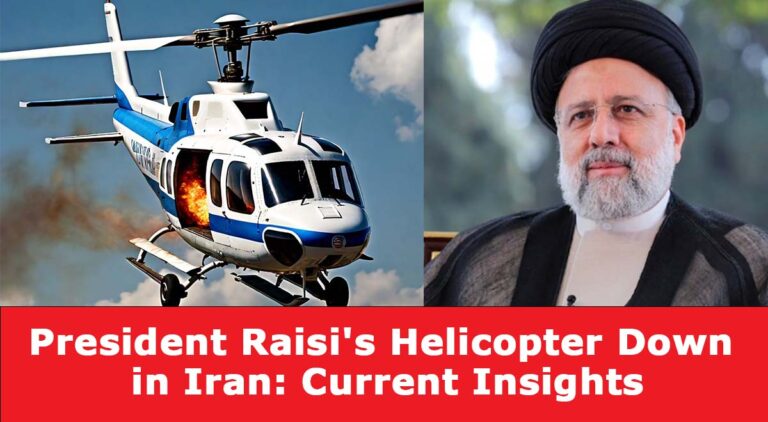Table of Contents
In a startling incident that has garnered international attention, the helicopter carrying Iran’s President Ebrahim Raisi crashed on May 19, 2024. This event has precipitated a flurry of inquiries, speculations, and urgent investigations. As the world watches closely, the ramifications of the helicopter crash are unfolding, impacting political, social, and economic dimensions within Iran and beyond.
Incident Overview
The helicopter crash occurred under circumstances that remain partially shrouded in mystery. Initial reports indicate that the aircraft encountered technical difficulties shortly after takeoff. Eyewitnesses described a sudden loss of altitude followed by a hard landing in a remote area. Emergency response teams were dispatched immediately, and the scene was secured by military personnel. Preliminary assessments suggest a possible mechanical failure, though investigations are ongoing to determine the exact cause.
Response and Rescue Efforts
The rapid mobilization of rescue teams underscores the gravity of the situation. Within minutes of the crash, specialized units were on-site, providing medical assistance and securing the area. President Raisi and the other occupants were swiftly evacuated and transported to a nearby hospital. Medical professionals have reported that while there were injuries, no fatalities occurred. The coordinated response by various emergency services highlights Iran’s preparedness for such crises, demonstrating both efficiency and resilience.
Political Implications
The crash has precipitated a wave of political reverberations within Iran. As the country’s highest-ranking official, President Raisi’s safety is paramount, and this incident has inevitably sparked debates about the adequacy of security protocols. Critics are questioning the maintenance standards of official aircraft and the decision-making processes regarding the president’s travel arrangements. The government has pledged a thorough investigation, vowing transparency to assuage public concern and restore confidence in the administration’s competence.
International Reactions
Globally, the incident has elicited a spectrum of reactions. World leaders have expressed their relief at President Raisi’s survival and extended their best wishes for a speedy recovery. Diplomatic channels have been active, with numerous countries offering support and expertise to aid the investigation. This outpouring of international solidarity underscores the interconnected nature of global politics, where the well-being of a single leader can have far-reaching implications.
Investigation and Findings
The investigation into the crash is being led by a special task force comprising aviation experts, engineers, and security officials. Early examinations have focused on the helicopter’s maintenance logs and flight records. Black box data is being meticulously analyzed to reconstruct the events leading up to the crash. Preliminary findings suggest a possible engine malfunction, but further analysis is required to confirm this hypothesis. The task force is committed to uncovering the truth, and their final report is anticipated with keen interest.
Conclusion
The helicopter crash involving President Raisi is a sobering reminder of the unpredictable nature of aviation and the fragility of human life. While the immediate danger has passed, the incident continues to resonate across multiple spheres. As investigations proceed and more information comes to light, the full impact of this event will become clearer. For now, the world remains watchful, reflecting on the precarious balance between safety and risk in the pursuit of governance and leadership.
